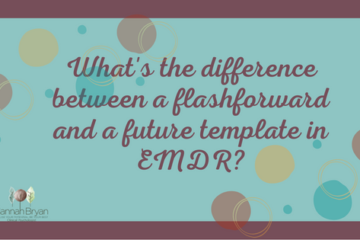So last week I talked about how we should really try and stay out of the way as much as possible during processing and how hard it is to do this when we first train in EMDR https://theemdrsupervisor.com/how-much-should-we-talk-during-emdr-processing/.
This week’s post may feel a little like a contradiction as we talk about to intervene and the use of interweaves. It’s a very fine line between knowing when to stay out of the way and let the processing continue and when to step in.
For me this is the importance of our clinical judgement. I always say to my supervisees that nothing is set in stone and we always need some flexibility in interpreting the guidance. But when I am watching tapes I want to see a reason why you made that clinical decision at that moment in time. If you were a fly on the wall you might see a client emotional and a therapist randomly moving their hands and then saying “What do you get now” and “go with that”. It could appear to an observer that the therapist is not really doing much but as therapists we all know that that is far from the truth. If only we could record all those thoughts that are going round in our head during a processing session.
I wonder if this is linked to why we do sometimes get pulled into talking a little too much. In my psychodynamic days I would always be thoughtful, reflective and of course I would let my clients know what I was thinking, something that we are not encouraged to do in EMDR treatment. So it can feel like we as therapists are doing nothing and therefore have to prove ourselves by engaging in conversation.
So I am always thinking, where are we on our client journey with processing the trauma? My biggest question to myself is ‘Is the train still moving?” I am listening out for ‘stuckness’ this may manifest as the client saying the same thing over again, or saying the same as what they said a few sets ago, it can feel that the train has slowed right down, it’s almost stopped so we want to get it moving as quickly as we can.
At this point I try my basic unblocking techniques (https://theemdrsupervisor.com/what-to-do-when-emdr-processing-appears-stuck/) and if this doesn’t work I will then think about an interweave. I personally find it helpful to try and think of the domain that the client might be stuck in. Now this may not be the same domain as the negative cognition you identified in phase 3 but at that moment in time as your client is stuck and the train has almost stopped, what domain are they actually stuck in? I developed a cheat sheet which you can download here (https://mailchi.mp/41c70e269dad/cognitive-interweave-cheat-sheet) because what I was finding was that I often felt a bit stuck myself in these moments (likely a transference issue here too!!) and wasn’t quite sure what to say.
But don’t forget that once we have made our suggestion we stay out of the way and let the processing continue naturally, don’t see this as a time to stop and go back to different models of therapy!!



0 Comments